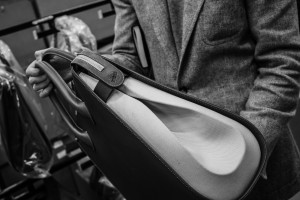We live in an era where knowledge knows no boundaries. Technology and innovation has brought us where we are today. Whether it is in fashion, automotive, home interior or any other industry, we have made huge leaps forward in the development of each of those industries bringing something exciting and compelling to the table each and every time. But while celebrating these successes we are also confronted with the effects these developments have had on our environment. In order to be able to enter the next decade with the same innovative mindset we realize that things need to change.
But change does not happen easily. It is too simplistic to say that we should all become more sustainable as companies. So how do we take the first steps in creating a better future-proof industry?
To discover future-proof solutions and to change our innovative mindset we first have to look at the bigger picture. What’s happening in the world of leather? Who works with it and what does it do to our environment? What do the costumers desire and what do they demand? Where do we start? Leather is one of the most primal organic materials in the world. In the beginning of mankind we used it to keep us warm during cold winters. Over time, leather fashion became a craft centered in Italy – the leather fashion capital of the world. But not only in Italy are leather products produced on a large scale, more and more countries and companies are working intensively with leather to create durable, organic and high-quality leather applications in, for example, home furnishing, the automotive industry and of course the fashion industry. We can say that leather has become popular beyond expectation, but what does that mean for the industry?
Each year millions upon millions of hides are produced. The demand for hides have a great impact on the industry and the environment: the industry is pushed towards producing more hides at a faster pace while the environment is compromised. Chemicals, a lot of salt, water and energy is used in the tanning process. Consumers are not blind to this development and have become much more aware of what they wear and what it does to the environment. They have begun to demand high-quality leather which is sustainable and less harmful to animals. We believe this demand for environmental and durable leather products will increase exponentially and it will challenge the entire industry, now and in the future.
These somewhat conflicting demands – producing more leather but creating a sustainable future-proof industry at the same time – means a different innovative mindset is required. The industry has to look for new ways to tan hides in a more environmental friendly way, without losing precious production time. To reduce the amount of salt needed in tanning processes, to save up to millions tons of liters of water per year and in general to lower the amount of energy needed per year.
These changes can make a huge difference, and by showing the world the amount of resources it could save us we hope to create a positive impact on the leather industry. By tanning in a more environmental friendly way we can create a better future for the current generation but also for generations to come. Where consumers now have to ask for sustainable leather products, it will become the standard in the future.
We are very proud that a lot of partners, companies and brands all over the world have already acknowledged this need for a more sustainable tanning process. This means we are already one step closer to our goal of creating a better future.
We believe that in the future the question ‘to be sustainable or not to be sustainable?’ has lost its relevance. If we keep innovating and if we discover new possibilities and solutions, sustainability is the standard, not the answer. Together we can make a difference.



